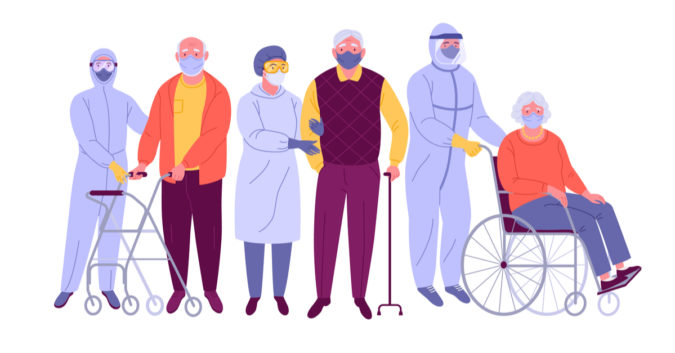As many as 400 nursing homes in the U.S. have been infected with the novel coronavirus, according to a new report from the U.S. Centers for Disease Control and Prevention (CDC).
The figure marks a nearly 175% increase in infections from just a week ago and highlights the intensifying threat that the virus poses to the country’s elderly. But because the CDC is not disclosing exactly which facilities are infected, families are largely in the dark about the extent to the threat and whether their loved ones are at risk.
Americans Are in the Dark
Given what we currently know about the novel coronavirus, it would seem most pressing to isolate and protect nursing homes throughout the country. COVID-19, the respiratory illness caused by the novel coronavirus, gets deadlier with the age of the patient, making elderly care facilities especially vulnerable.
Some estimates have placed the mortality rate for patients over the age of 80 at nearly 15%. According to the CDC, the highest percentage of severe outcomes are among individuals over the age of 85.
With such a high risk to senior citizens, nursing homes face the overwhelming task of combatting a highly contagious and invisible enemy. The uncertainty is compounded by the fact that the CDC has not disclosed which long-term care facilities have been infected, let alone how many patients have tested positive for coronavirus.
Health department officials in some states have said that kind of reporting violates patient confidentiality. In response, some reporters and advocates have taken to filing records requests to disclose the information.
"The public needs to know which facilities have active cases of coronavirus,” Toby Edelman, a senior policy attorney with the Center for Medicare Advocacy, told NBC News. “Keeping this information secret adds to the tremendous anxiety that families already feel."
Right now, it seems we are still very much in the early stages of the growth curve for COVID-19 cases, unable to peer past the dramatic upswell that is expected to occur over the next few weeks. Policies like social distancing and shelter-in-place orders are really only meant to buy time — “flattening the curve,” so the healthcare system does not become overwhelmed.
All the uncertainty is compounded by how little is known about the nature of the threat to long-term care facilities. It has left family members wondering if they are better off taking their loved ones out of nursing homes altogether. That, too, is a risky proposal for all the same reasons as breaching quarantine protocols. Infected individuals are not always symptomatic.
‘Like Fire Through Dry Grass’
The U.S. Centers for Medicare and Medicaid Services (CMS) has issued guidelines to nursing homes throughout the country, but reporting from the Washington Post suggests the agency is actively keeping details about infections from the public. The lack of information has led some facilities to notify patients, families, and the public on their own.
“People have a right to know where this is happening,” Charlene Harrington, a professor at the University of California San Francisco who has studied nursing homes, told the Washington Post. “Why isn’t CMS tracking this? These nursing homes should be made public so that people have the option to take people out. They’re protecting nursing homes here, not patients.”
Many, if not most nursing homes have adopted policies prohibiting visitors for the duration of the crisis. But because these facilities are staffed full-time, and because infected individuals don’t always display symptoms, the prospect of a full quarantine is a monumental task.
In speaking of the threat to nursing homes, New York Governor Andrew Cuomo, quite ominously, said the virus “can be like fire through dry grass.”
